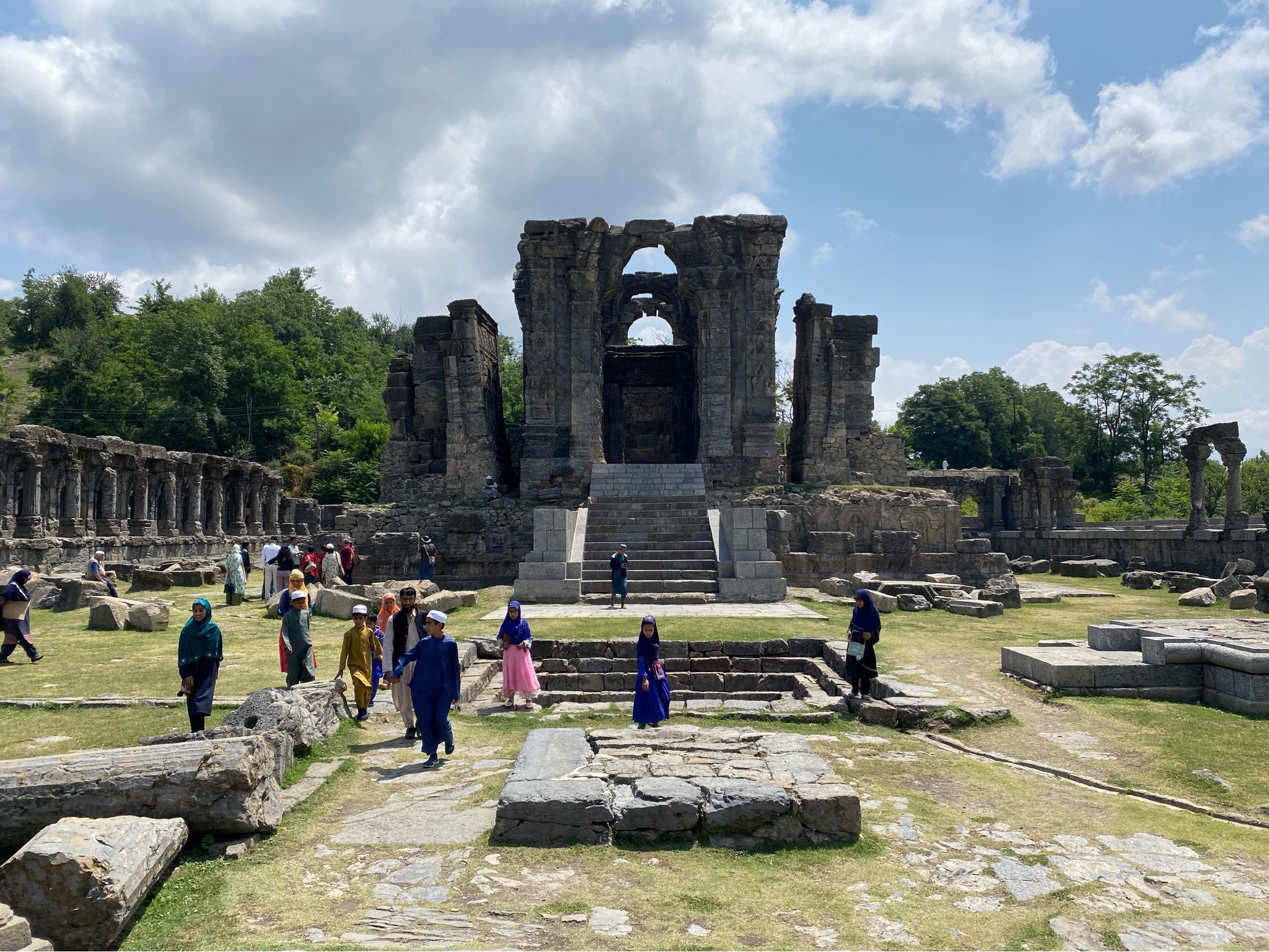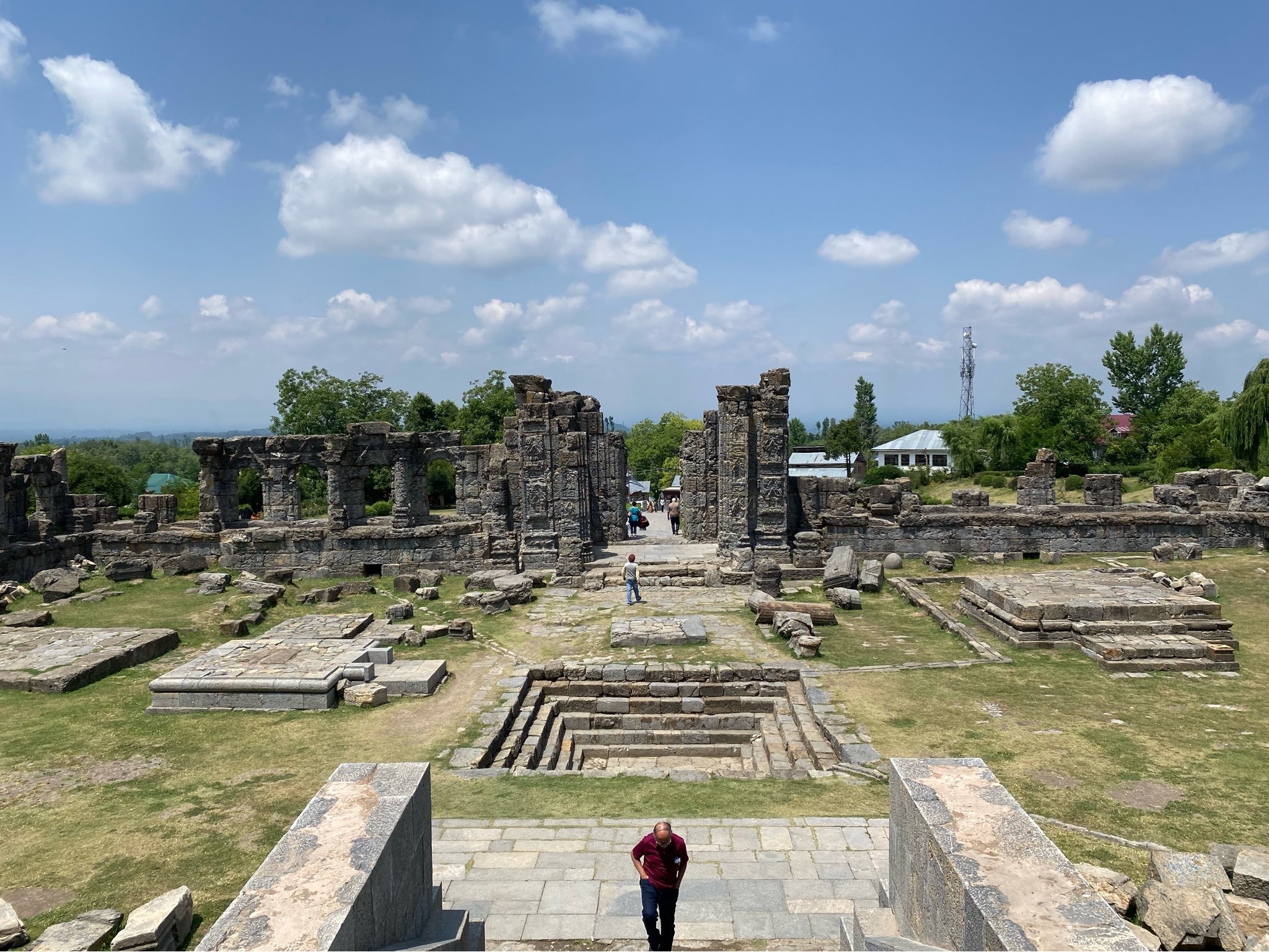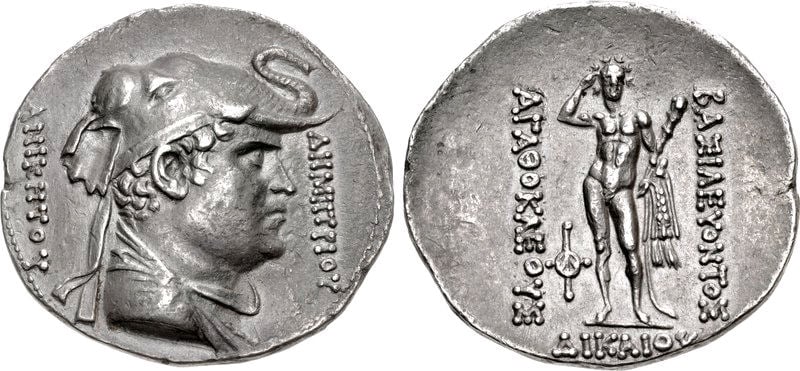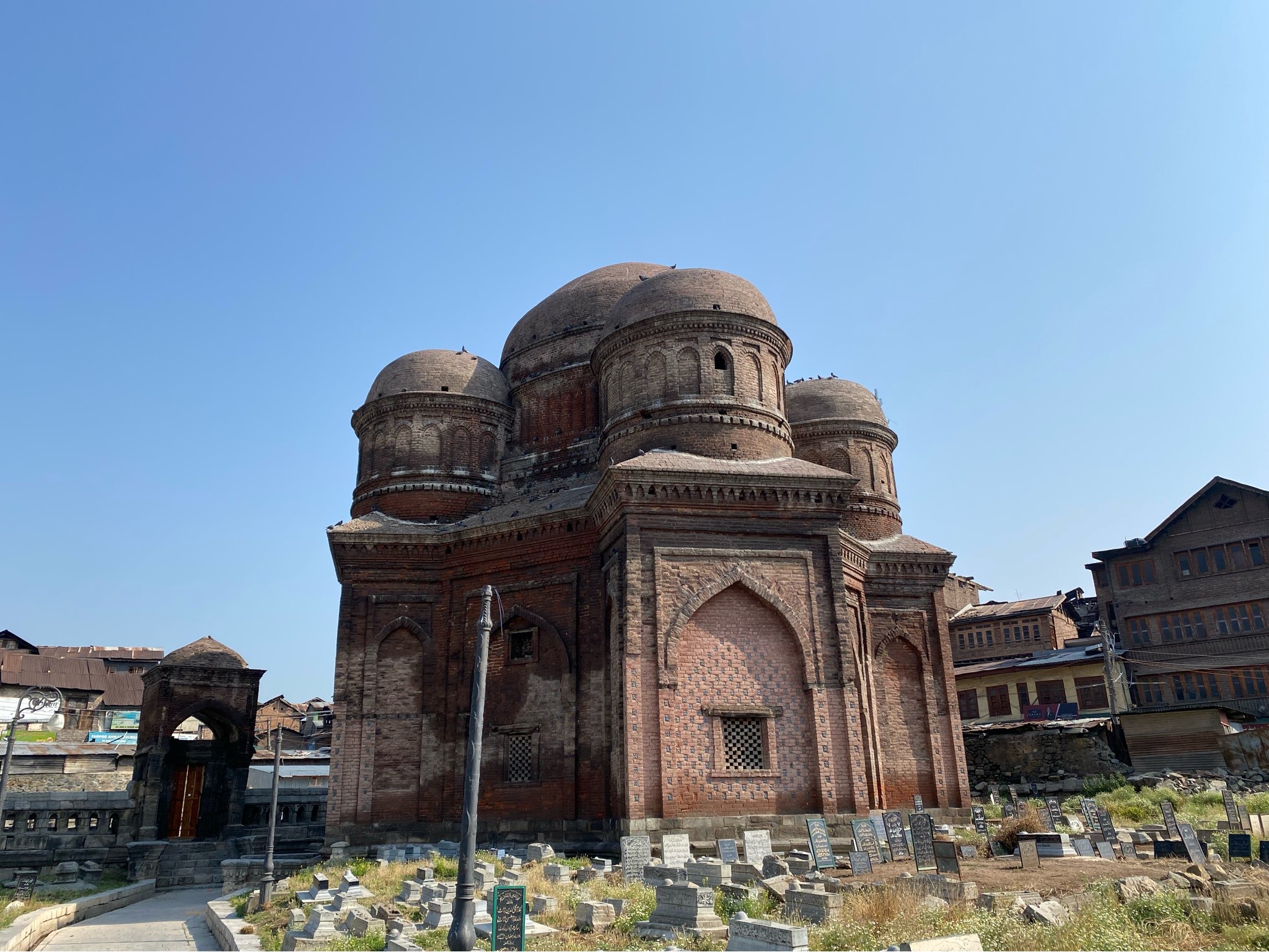
Apart from being well-known for its cashmere pashmina shawls, which even Roman emperors favored, the beautiful region of Kashmir in India was once ruled by more than eleven Greek kings, and it has been called heaven on earth by countless travelers who have visited this land from ancient times to the present.
Lofty mountains, deep valleys, alpine meadows, gushing streams, clear rivers, high waterfalls, humongous glaciers, dry fruits in plenty, and a plethora of lakes—this is nature in its substantially pristine form.

Greek Kings of Kashmir
The ancient Greeks were once the rulers of this paradise on earth. Kashmir has had several Greek kings, including Demetrius, Eukritidus, Appollodotus, Menander, Strato, Laysis, Hippostratus, and many others still.
The Hellenic history of Kashmir ended with the fall of the Indo-Greek kingdom but continued with substantially Hellenized Indo-Scythians, Indo-Parthians, and the Yuezhi kingdoms that replaced the Indo-Greeks. The Indo-Greeks patronized Indo-Greek art, architecture, clothing, and the Greek language and script.

In total, there were about thirty-two known Greek kings who ruled the Indian sub-continent one after the other or sometimes as contemporaries.
In Kashmir, the rule of the Indo-Greek kingdoms began in the second century BC and continued until the early first century AD. Several Greek kings of Kashmir have been identified through the Kharosthti inscriptions and statues in the Lolab Valley.
These have been found by Mr. Iqbal Ahmad, a trained numismatist from Kashmir, and numerous Greek coins have been preserved in the Srinagar Museum.
Euthydemus, Eukratides, Menander, Demetrius, Appollodotus, and Hippostratus were some of the Greek Kings of Kashmir. Menander’s discussion with Nagasen, the Buddhist saint, recorded in the Milndaphana—a Buddhist book—is believed to have taken place in the laps of Zabarwan Hills near present-day Harwan, which is about nineteen kilometers from Srinagar, the capital of Indian Kashmir.
Greek Influence on Kashmiris

It is noted that before his return, Alexander the Great had permitted his people, who were mostly comprised of Greek garrisons, to settle in the land he conquered during his military campaigns.
Several frontier tribes of the Kashmir region consisting of Gups and Dards are believed to be the descendants of soldiers of Alexander the Great. These people lived in the Gilgit, Hunza, Gurez, and Kargil areas of Kashmir. In fact, the Indian government in Kashmir is promoting tourism in the Gurez Valley for the economic development of inhabitants of this region.

Ionian Greeks are said to have been the first to arrive in India. The term Yava which originated from Yavan, meaning Ionian—due to the Ionian inhabitants of the region—has been used in local Kashmiri folk literature, and it is still very popular in communication in the upper reaches of the Kashmir Valley, as per Mr. Iqbal Ahmad.
The term Yava literary means beautiful, handsome, or cute, and when it refers to people, it means people with fair complexion.
Similarly, when Kashmiris have to refer to a man or woman with a fair complexion, they say he or she is Yava. For them, Yava is one with a fair complexion and light-colored eyes. This was the characteristic feature of ancient Greek people.
Individuals of the Gupis and the Brokpas, famous tribes of Hunza, possess such a complexion. They are believed to be the descendants of Greeks. Similarly, in Kashmiri folklore, there is repeated mention of Yavana, which means Greek King in Sanskrit. Thus, this literally means “a handsome prince.”
Kamdeva (Hindu deity of love) is another name mentioned in Kashmiri folklore, which also refers to a prince with a fair complexion. This has likewise been adopted in the hilly and forested areas of Kashmir. The terms of Yavana Raja and Kamadeva seem like a reference to certain Greek princes or satraps who might have undertaken their expeditions in these far-flung lands.
There are several villages and places that are believed to possess the names of Hellenistic order to this day. These include, for example, Damudar, Nics in the Pulwama District, Munand in the Shopian District, and Memender and Harman. Others still include Mendar in the Poonch District and Lious in the Kulgam District. These places or villages represent the corrupt form of the names of the Indo-Greek princes, such as Demetrious, Nicias, Menander, and Lyasis.
Archeological and Numismatic Discoveries of Greek Kashmir

Coins of Menander and Appolodotus have been found in good number in Southern Kashmir. Prior to its excavation, Semithan (Bijbehara) yielded several Indo-Greek coins. There are still reports arriving from the Semithan regarding the discovery of such coins, but, unfortunately, many such coins go into hands of antique dealers who are hardly concerned with the historic value. Other archeological evidence also throws some light on the presence of Indo-Greek rulers in the valley.
A deposit of forty cans consisting of several floor levels was revealed at Semithan. The pottery is distinguished by a thin fabric with bright red, orange, or light-colored slip. A clay seal depicted an Indo-Greek deity. A significant find was the discovery of a pot with the inscription consisting of five letters externally engraved below the rim portion of the pot. It reads as Dharmorai or Dharmo (Rajai). Menander was very familiar in the region, and there are several places which carry his name. Two such places are also identified in southwest Kashmir—one as Mendhar in Poonch District and another as Meander in the Pulwama District.
Hellenism in Post Indo-Greek Kashmir

The Kushana conquest of Kashmir took place around 50 AD. Apparently, the Kushan aristocracy attempted to adopt the royal ideology of the Greco-Bactrian Kings (the Greek Kings of Central Asia) and its religious implications. It is, therefore, no accident that in the sculptural decoration of the Kushan manor-house at Khalchayan, the enthroned ruler and his wife appear yet again with Nike, as per archeologist Galina Pugachenkova.
At the time when Vima Kadphises became Kushan emperor, religious life came to be characterized by two interesting features. One was the adoption of the forms of Greek religious art and the other the Greek iconographic interpretation of Kushan divinities as mentioned in the research paper “Religions in the Kushan Empire,” by J. Harmatta, B. N. Puri, L. Lelekov, S. Humayun, and D. C. Sircar.
Kashmir was a significant province of the Hellenized Kushan Empire from the first century AD to the fourth century AD. It was in the period of Kanishka that the Fourth Buddhist Council was held somewhere in this land.
Greek Art and Architecture in Kashmir

The stone image of Lakshmi (the Hindu Goddess of fortune) reported from Brar near Vajibror. The present location is unknown but appears in all respects to be a Greek goddess of fortune standing in an elegant pose with eyes half-closed and the head held gracefully.
This merited the subtle facial expression the artist has carved with precision, and the free- flowing dress completed the image in the conventional way of Gandhara, the Hellenized region of Central Asia and Afghanistan. A Greek emblem is also held by Lakshmi. A near copy of this fine piece of work is located in Victoria and the Albert Museum of London.
Much like in the art of Gandhara, this Greek emblem was visible in many images of Panchika, Bodhisattva, and Buddha—all three important figures in the Buddhist faith. In the Hindu deities of Kashmir, this remained an element of stylishness in and after the 6th century and was incorporated in stone and bronze figures, as well as in terracotta, as per Aijaz A. Bandey.
Bandey even mentions that despite not many such examples having survived, the remnants of Hellenism continued in one way or the other in the sculptural art of the seventh century in Kashmir.
This is evident in the examples of the Pandrathen and, more particularly, in the female image (all of which are in the Srinagar Museum) in which the Greek skirt became more fashionable. From Martand Temple in Mattan Kashmir to Avanti Swami Temple in Awantipora Kashmir, the architectural style possesses substantial Greek influence.
Glory of Greek South Asia

Greeks are everywhere it is said. Then, how can they not be in the paradise of Kashmir! The Greek origins of several tribes in this region are an important topic for further research.
Greeks in South Asia have been tolerant and enlightened rulers even though archeological finds and the coinage of the Graeco-Bactrian kings attest to worship of the major Greek divinities. These divinities included Zeus, Poseidon, Apollo, Helios, Hercules, Dionysus, the Dioscuri, Athena, Artemis, Hecate, and Nike.
Nonetheless, the Greek of South Asia equally patronized their worship of Zoroastrian, Hindu, and Buddhist deities, and the spread of Mahayana Buddhism in the Indian sub-continent and the world has phenomenally been influenced by Greek contribution. Indeed, the Greeks of Kashmir left their mark on and Hellenized this paradise on Earth.
See all the latest news from Greece and the world at Greekreporter.com. Contact our newsroom to report an update or send your story, photos and videos. Follow GR on Google News and subscribe here to our daily email!



